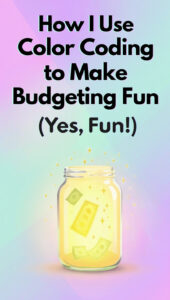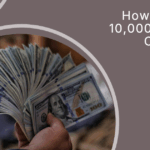Now Reading: How I Use Color Coding to Make Budgeting Fun (Yes, Fun!) 💖🌈
-
01
How I Use Color Coding to Make Budgeting Fun (Yes, Fun!) 💖🌈
How I Use Color Coding to Make Budgeting Fun (Yes, Fun!) 💖🌈
“budgeting”
Be honest—does the word “budgeting” make you feel stressed, bored, or just… tired?
You’re not alone, girl. So many women, especially in fast-paced places like the US, UK, and Canada, want to manage their money—but the process feels cold, clinical, and overwhelming. 💻📉
That’s exactly how I felt too—until I discovered the magic of color coding.
Now, budgeting is no longer a chore… it’s something I actually look forward to. It’s creative, calming, and surprisingly emotional in the best way. 🧘♀️✨
Let me show you how I turned my money chaos into a rainbow of clarity—and how you can do the same.

🎨 Why Color Coding Works (Especially for Women)
As women, we’re naturally visual, emotional, and intuitive thinkers.
And when numbers on a spreadsheet feel too harsh or robotic, color coding brings in emotion, intention, and softness.
Here’s what color coding did for me:
-
Helped me see where my money was going—at a glance
-
Made tracking feel like journaling, not math
-
Connected my spending to my feelings
-
Made budgeting stick—for the first time in years
Because when you add color to your finances, it feels less like a spreadsheet and more like a story you’re telling yourself. 💌
🖍️ Step 1: Pick Your Personal Color Palette
Before you dive in, choose a set of 5–7 colors that speak to you.
You can use highlighters, colored pens, or digital tags in apps like Notion, Google Sheets, or GoodNotes.
Here’s an example palette you can start with:
-
💕 Pink – Self-care & beauty (yes, that includes skincare & therapy!)
-
💛 Yellow – Fun & entertainment (Netflix, brunch, little luxuries)
-
💚 Green – Needs & essentials (groceries, rent, utilities)
-
💙 Blue – Savings, investments, emergency fund
-
🧡 Orange – Giving, gifting, donations
-
💜 Purple – Personal growth (books, courses, coaching)
Choose colors that bring you peace or joy—this is your budget’s mood board. 🎨🫶
📒 Step 2: Create Your “Color Key” Budget Sheet
Open up a blank page (physical or digital) and write out your categories, each assigned to a color.
Now go through your last month of expenses and highlight every transaction by its category color.
Suddenly, your bank statement isn’t just black and white—it’s alive with meaning.
Here’s what might happen next (like it did for me):
You realize your yellow (fun) category is bleeding into everything, while your blue (savings) has barely any color on the page. That visual hit? Powerful.
👀 Step 3: Track Weekly Using Color, Not Shame
Every Sunday, do a soft check-in. Light a candle, play music, pour some tea—and gently go over your transactions.
Ask:
-
What color showed up the most?
-
What color is missing?
-
How did I feel when I spent that money?
Maybe pink (self-care) felt nourishing, but yellow (random shopping) left you drained.
This isn’t about judging yourself—it’s about becoming aware. 🧠❤️
Over time, your budget starts to feel more like a mirror than a prison.
💡 Step 4: Use Color to Plan Your Month Ahead
Don’t just color code after you spend—do it before.
At the start of the month:
-
Lay out your budget using your color key
-
Assign amounts and goals to each color
-
Add hearts 💖 or stars ✨ to the categories that fuel your soul
This turns budgeting into a vision board for your money. You’re not just saving—you’re curating a life you love.
🧘♀️ Why This Hits Different…
When you make budgeting a visual, emotional experience, you actually want to show up for it.
It no longer feels like you’re just “managing money.” It feels like you’re:
-
Taking care of yourself
-
Creating space for joy
-
Being present with your habits
And THAT’s what keeps women consistent. Not shame. Not strict rules. But softness + systems working together. Now that you’ve set up your dreamy color-coded system, it’s time to take it from pretty to powerful. Because color-coding isn’t just about looking nice—it’s about gaining clarity, creating emotional connection, and finally feeling in control of your money.
Let’s dive into the second part of this beautiful budgeting journey, and I promise—you’ll never look at numbers the same way again.
📄 Step 5: Use a Printable (Or Digital) Color Budgeting Template
To really stay consistent, I started using a printable tracker where each row represents a category, and each week I’d fill in the amounts using my color palette.
You can do this in:
-
A bullet journal
-
Google Sheets (with cell highlights!)
-
Apps like Notion or GoodNotes
-
Or download free printable budgeting templates from Pinterest
💡 Tip: Add a “color key” at the top of your page every month. It keeps your categories aligned and your brain focused.
💻 Step 6: Color-Code Digitally (If Paper Isn’t Your Thing)
If you’re more tech-savvy or just always on the go, go digital.
Google Sheets is your best friend.
You can:
-
Color each cell according to your budget category
-
Use conditional formatting to auto-color based on category labels
-
Sort your data weekly to see where most of your “color” is going
Other tools:
-
YNAB (You Need A Budget): Let’s you tag and sort by purpose
-
Notion: Create a budgeting database and assign custom color tags
-
Goodbudget or Excel: Flexible enough for visual layouts
🎯 The goal is to make it effortless to understand your money visually.
🔍 Step 7: Review Your Monthly “Color Story”
At the end of each month, take 10–15 minutes and review your budget like it’s an art project.
Ask yourself:
-
Which color dominated this month?
-
Which color felt the most aligned with my goals?
-
Did my spending reflect my values—or my stress?
This is where budgeting becomes something emotional.
You’re not just tracking money—you’re understanding yourself. 🌱
💬 Example:
If yellow (fun) was everywhere but blue (savings) was barely there, ask:
“Was I spending to avoid something? Or to treat myself lovingly?”
This is how you build emotional intelligence through money.
🌦️ Bonus: Add a Monthly “Money Mood Tracker”
I added a small section to my budget journal to track how I felt about money every few days:
-
🌤 Calm
-
🌧 Anxious
-
🔥 Confident
-
❄️ Numb
-
🌈 Grateful
Each mood connects with my budget habits. When I noticed I spent more during “numb” days, it helped me work on emotional triggers. And when I saw calm + confident next to savings days, it reinforced the good habits.
This kind of emotional pattern tracking is game-changing. It makes budgeting feel like a self-care ritual instead of a cold financial chore.
💌 Real Life: How This Shift Changed My Entire Financial Vibe
Before color coding, budgeting felt like punishment.
But now? It’s become my quiet Sunday ritual—like journaling, but for my future self. I light a candle, open my tracker, and gently look at what the colors are telling me.
And guess what?
-
I paid off my first credit card with zero guilt.
-
I started saving consistently for travel and skincare (hello Paris + facials!).
-
And most importantly, I stopped feeling shame around money.
I replaced shame with self-trust.
And a big part of that came from simply adding color.
✨ Final Thoughts: Budgeting Can Be Beautiful
Color coding might seem like a small thing—but it’s not.
It’s about making money management feminine, intentional, and soulful.
It’s about turning something heavy into something light and clear.
It’s about taking your power back—one pastel highlighter at a time.
So here’s your challenge:
Pick your palette. Color your month. Let it speak to you.
And remember—your money should reflect the beauty of your life. 🌸
📌 Save this, share it with your bestie, and start your next budget with a splash of joy.
Because budgeting should feel as vibrant as you are. 💖














